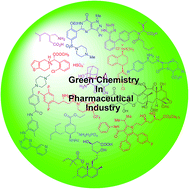Green chemistry approaches as sustainable alternatives to conventional strategies in the pharmaceutical industry
Abstract
Green chemistry is a rapidly developing field providing an avenue for the sustainable development of future science and technology. It offers enhanced chemical process economics, concomitant with a reduced environmental burden. It can be applied to design environmentally benign synthetic protocols to deliver life-saving medicines, while minimizing environmental impact. It is expected that chemists and chemical engineers should produce greener and more sustainable chemical processes for drug design and it is likely that this trend will continue to grow over the next few decades. This review summarizes environmentally benign protocols for the synthesis of some FDA (Food and Drug Administration) approved drugs which are in high volume demand coupled with their requirements of high chemical and optical purity utilizing the principles of green chemistry.


 Please wait while we load your content...
Please wait while we load your content...